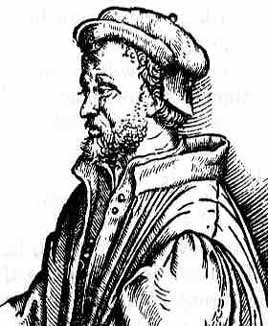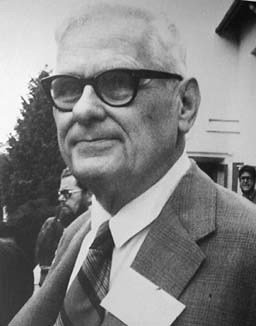Introduction à la logique

Un nouveau standard :
« Le theodoer X relit toutes les PRs des Theodoers qui ne relisent pas leurs propres PRs et seulement celles-ci. »
Qui relit les PR du theodoer X ?

Qu'est ce qu'un bon ensemble de standards?
Indépendance
pas de standard redondant
Cohérence
pas de contradiction
Completude
pas d'indécision
Angoisse des mathématiciens du XIXe
Complexité des "objets" mathématiques
Temps
Nombres entiers
Nombres rationnels
Nombres complexes
Nombres réels
Fonctions
Ensembles
Relations algébriques








David HILBERT
"Prouver" la cohérence des mathématiques
Donner un ensemble de standards (axiomes) pour les mathématiques
La logique:
une théorie mathématique dont les "objets" sont des théorèmes et des preuves
Complexité des "objets" mathématiques
Temps
Nombres entiers
Nombres rationnels
Nombres complexes
Nombres réels
Fonctions
Ensembles
Relations algébriques
Théorèmes
Preuves
Une idée nouvelle?

Εὐκλείδης
Problème du 5ème postulat: « Par un point donné, on peut mener une et une seule parallèle à une droite donnée »
Equivalent à: « La somme des angles d'un triangle est egale à deux angles droits » (Legendre)

Les théorèmes ?
1. des élèments de base e.g., des Théodoers
Un théorème = une formule logique
Les théorèmes ?
Un théorème = une formule logique
2. des prédicats de base e.g.,
« x relit la PR de Antoinet »
« Tristanr merge et déploie sa PR »
« Vrai »
« Faux »
Les théorèmes ?
Un théorème = une formule logique
3. des connecteurs logiques
« Ou »
« Et »
« Implique »
Les théorèmes ?
Un théorème = une formule logique
4. des quantificateurs
:'(
:)
Le théorème de la PR achevée
Le théorème du deploiement
« Le theodoer X relit toutes les PRs des Theodoers qui ne relisent pas leurs propres PRs et seulement celles-ci. »
Un nouveau standard :
is syntactic sugar for
2
2
1
is syntactic sugar for
1
Les preuves ?
Une preuve = un arbre
- Les feuilles sont des axiomes
- Les noeuds sont des règles logiques
- La racine est le théorème que l'on veut prouver
La notion de séquent
les hypothèses: une liste de formules
la formule que l'on prouve
En langage humain:
« Sous les hypothèses et ... et , la propriété est vraie »
Les axiomes

Les règles de l'implication
prémise(s)
conséquence
Les règles pour vrai / faux
Les règles et / ou
Introduction
Les règles et / ou
Elimination
Les règles pour les quantificateurs
Elimination
!


« Le theodoer X relit toutes les PRs des Theodoers qui ne relisent pas leurs propres PRs et seulement celles-ci. »
Un nouveau standard :
Tiers - exclus
« Il n’est pas possible qu’il y ait aucun intermédiaire entre les énoncés contradictoires : il faut nécessairement ou affirmer ou nier un seul prédicat, quel qu’il soit. »
Aristote, Métaphysique
« Enlever le principe du tiers-exclu aux mathématiciens serait la même chose, disons, que d’interdire le téléscope à l’astronome ou au boxeur l’usage de ses poings. »
Hilbert, Grundlagen der Mathematik
(rappel)
tiers exclus:
Ok!
Ok!
Paradoxe du buveur
« Dans une pièce non vide, il existe une personne qui si elle boit, tout le monde boit. »
Qu'est ce qu'on fait avec tout ça ?
Des théorèmes sur les théorèmes :)

Deux niveaux qui intérfèrent: la théorie et la méta-théorie
Les objets bien formalisés de la logique
théorème = formule logique
preuve = arbre de dérivation
Des raisonnements sur la logique elle-même
théorème = un enoncé usuel
preuve = un raisonnement logique traditionnel

« Le plus petit entier naturel non descriptible par une expression de quinze mots ou moins. »
Paradoxe de Berry
« n n'est pas descriptible en moins de quinze mots »
donc
en moins de quinze mots.
n'est pas descriptible
vérifie
donc
est descriptible en
moins de quinze mots.

« Le plus petit entier naturel non descriptible par une expression de quinze mots ou moins. »
Paradoxe de Berry
« n n'est pas descriptible en moins de quinze mots »
donc
en moins de quinze mots.
n'est pas descriptible
vérifie
donc
est descriptible en
moins de quinze mots.
Cohérence
La théorie est cohérente ssi n'est pas prouvable.
Indépendance
La propriété est indépendante de la théorie ssi
ni ni ne sont prouvable.
Complétude
La thèorie est complete ssi pour toute propriété ,
l'un des deux séquents et est prouvable.

David HILBERT
"Prouver" la cohérence des mathématiques
Donner un ensemble de standards (axiomes) pour les mathématiques



?
Giuseppe Peano
Abraham Fraenkel
Ernst Zermelo


David HILBERT
"Prouver" la cohérence des mathématiques
Donner un ensemble de standards (axiomes) pour les mathématiques
?
KO
Théorème d'incomplètude (Gödel)
Dans n'importe quelle théorie récursivement axiomatisable, cohérente et capable de « formaliser l'arithmétique », on peut construire un énoncé arithmétique qui ne peut être ni prouvé ni réfuté dans cette théorie.
Et après ?




Introduction à la logique
By Antoine Toubhans
Introduction à la logique
Introduction à la logique, présenté à Theodo le 12/08/2016
- 1,351
